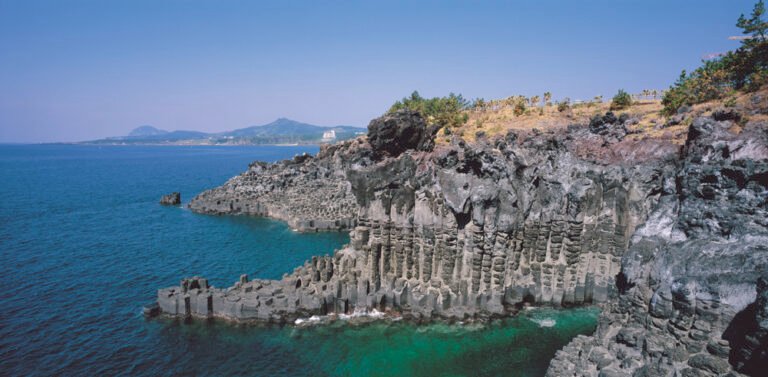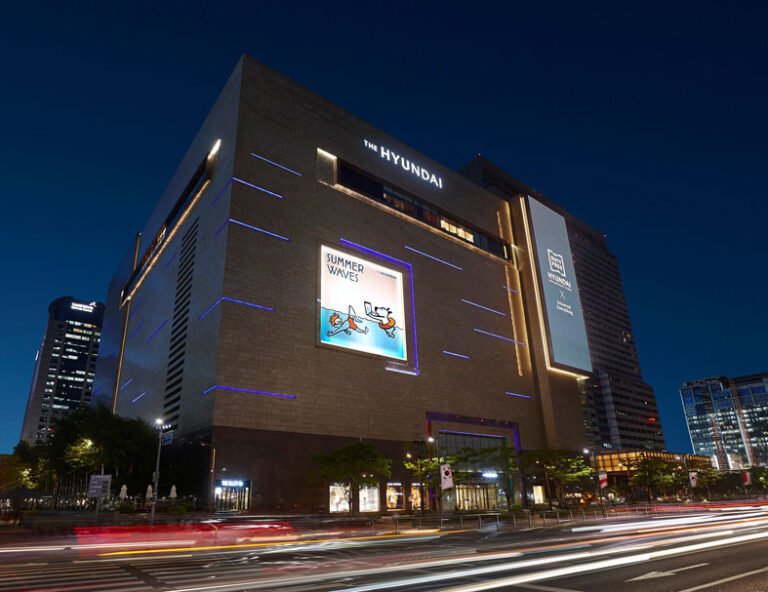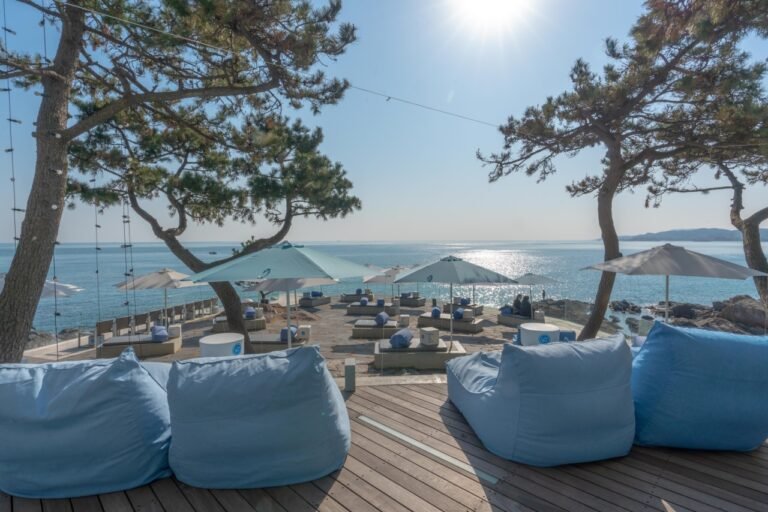Jeju Island: Everything You Need to Know in 2024

Visit Jeju Island in 2024 and approve of the most beautiful places,
- Seongsan Ilchulbong and
- Hallasan National Park.
Enjoy activities such as,
- Hiking,
- Scuba diving and
- Surfing.
Try traditional dishes such as black pork, bibimbap, and fresh seafood. Experience the beauty and taste of Jeju while lying on beautiful beaches and visiting traditional villages.
Table of Contents
TogglePlaces to Visit
- Seongsan Ilchulbong (Sunrise Peak) –
An iconic, vista-scenic volcanic tuff cone known for its remarkable sunrise views and hiking trails above the coast of Jeju Island.
- Hallasan National Park –
Forested park is home to Hallasan, South Korea’s highest peak, with trails through diverse ecosystems.
- Manjanggul Lava Tube –
Manjanggul Lava Tube on Jeju Island, one of the world’s longest lava tubes, was shaped by volcanic hollow and created by volcanic outflow.
Its moon-like underground section and famous geological developments announce a chilling background.
- Spirited Garden – Spirited Garden is a peaceful retreat on Jeju Island, where bonsai trees are artistically crafted in a secluded area full of leafy shrubs and pleasant pathways, ideal for fans of the outdoors and photographers.
- Udo Island –
Among the mentioned alternative tourist destinations, I would recommend visiting Udo Island.
This is a serene gem off the coast of Jeju,
- Known for its white sand beaches,
- Lush countryside,
- Unique attractions,
- Including Seobin Baeksa,
- Udo Lighthouse.
What to Eat
- Black pork – The black pork indigenous to Jeju has a rich taste and a fluffy texture that comes from the volcanic soil with which the aboriginal black pig is bathed.
- Bibimbap –
Jeju Island’s Bibimbap is unique in that it makes use of locally grown ingredients such as Hallasanbong tangerines which enhances this traditional Korean dish.
- Korean BBQ –
In summary, Korean BBQ from Jeju Island introduces natives and foreigners to the taste of deliciously grilled black pork, revealing the flavor of the Island and the Korean peninsula.
- Seafood –
The supply of Vendogu in Jeju there is an unbeatable source of Vendogu in Jeju. Vendogu is an abalone type seafood that has a higher market price. Other kinds of seafood that could be found in Jeju are Sashimi Seonbin and sea urchin.
- Hallasanbong tangerines –
The tangerines are grown in the rich volcanic lava soil of Jeju Island. The fruits are exceptionally sweet and so juicy that it pops out when you bite into it, and the taste is appealing.
Safety on Jeju Island
Safety levels in Jeju Island and Korea, in general, are comparatively high however, there are natural dangers such as typhoons and volcanic discharge that require revenge.
Read local Recommendation, keep an eye on natural phenomena, and listen to the authorities warnings.
To give up from swimming in the ocean, and maintain hiking safety protocols.
Frequently Asked Questions (FQAs)
When not to visit Jeju?
Jeju in February can be savagely cold with unrelenting weather, while Jeju in April or May can be warm with beautiful temperate conditions for hiking trails and other outdoor activities
What is the cheapest month to travel to Jeju?
Currently, January is the cheapest month in which you can book a flight to Jeju do (average of RM 259). Flying to Jeju in November will prove the most costly (average of RM 465).
Is Jeju Island a must?
The island is one of the most relaxing vacation spots found in Korea thanks to its unique local atmosphere and beautiful natural environment.
What is the best month to go to Jeju Island?
Mid-March to early April is one of the best times to visit Jeju with,
- Cherry blossoms,
- Azaleas and
- Magnolias in bloom.
May and June offer pleasant weather, but July and August are hot, dry and wet. Temperatures drop by September and November Client added interest with the autumnal foliage.
How many days is enough for Jeju Island?
Jeju Island might be South Korea’s largest island, but it’s still small enough to zip around from one activity to another, so a weekend getaway is perfect.
However, if you have enough time, a 3- or 4-day Jeju Island journey is better.
Joining me for latest travel news, offers, and events
Stay connected on Instagram

